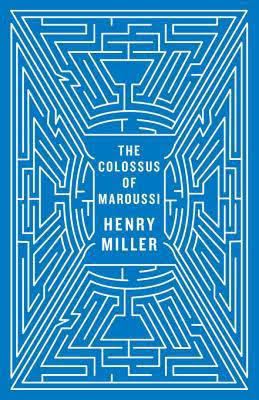8 /10 1 Votes8
Language English Publication date 1941 Originally published 1941 Genre Travel literature | 4/5 Goodreads Publisher Colt Press ISBN 978-0-8112-1857-3 Country United States of America | |||||||||||||||||||||||||||||||||
 | ||||||||||||||||||||||||||||||||||
Similar Henry Miller books, Other books | ||||||||||||||||||||||||||||||||||
The Colossus of Maroussi is an impressionist travelogue by Henry Miller which was first published in 1941 by Colt Press of San Francisco. Set in pre-war Greece of 1939, it is ostensibly a characterization of the "Colossus" of the title, George Katsimbalis, a poet and raconteur. The work is frequently heralded as Miller's best.
Contents
Background
In 1939, Henry Miller left Paris, his home of nine years, as the events of the Second World War began to unfold. An impoverished writer in need of rejuvenation, he travelled to Greece at the invitation of his friend, the writer Lawrence Durrell, who lived in Corfu. Miller had already found his voice as an author whilst an expatriate and had published some of his best-known works, including Tropic of Cancer, Black Spring and Tropic of Capricorn. The text is inspired by the events that occurred during Miller's nine months living there. Miller's evaluation is tempered by the outbreak of the Second World War which eventually forced him to return to America in December 1939. The book, written in New York, was influenced by Miller's resentment at having to return to his native land and his subsequent feeling of isolation.
Content
Miller travels across Athens, Crete, Corfu, Poros , Hydra and Delphi.
The text is ostensibly a portrait of the Greek writer George Katsimbalis (the "Colossus" of the book's title), although some critics have opined that the Colossus is more of a self-portrait of Miller himself.
The influence of D. H. Lawrence and Ernest Hemingway on the work has been noted.
Critical reception
The work is considered to be Miller's best by critics, a view which the author himself also held. Pico Iyer describes the novel as an "ecstatic ramble". Will Self depicts Miller in the novel as "a relentless fabulist who advances solipsism to the status of one of the fine arts."
